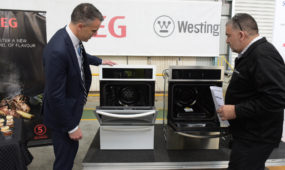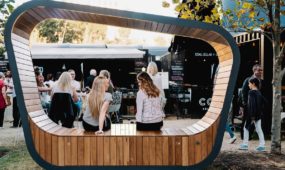Hi-tech machine enables new graphene purification technique
Manufacturing
A REVOLUTIONARY machine that can unboil an egg is being used to develop graphene purification technology.

Sign up to receive notifications about new stories in this category.
Thank you for subscribing to story notifications.
Researchers from Flinders University in South Australia along with Western Australian company First Graphite Ltd will use the dynamic Vortex Fluidic Device (VFD) to produce high-quality graphene for industrial use.
Graphene is the building block of graphite and is one of the most sought after materials in the world because of its robust nature.
More than a million metric tons of graphite is mined globally each year.
It is 200 times stronger than steel but remains flexible and impermeable, making it ideal for the development of a range of modern technology such as lithium-ion batteries, sensors and transparent-conducting electrodes for flexible solar cells.
Based on previous graphite research involving the VFD, First Graphite plan to scale up the process to a commercial level with the potential of delivering high-value carbon materials to global markets.
First Graphite Managing Director Craig McGuckin said graphene uses were applicable to a vast range of industries and he believed the material would eventually be used in most modern technology.
“What is required is creating high quality graphene from graphite, doing so quickly and efficiently and that is what we are trying to take up now,” he said.
“We see the VFD partnering with our own processes to assist greatly in creating different types of graphene for different uses.”
In 2015, Flinders University scientists were awarded an Ig Nobel Award for creating the Vortex Fluidic Device and using it to unboil an egg.
The device has also been used to slice carbon nanotubes accurately to an average length of 170 nanometres using only water, a solvent and a laser.
It is now being tested to prove its potential as a commercially viable graphene producer.
VFD creator and professor of clean technology at Flinders University Colin Raston said Graphite was made up of multiple crystalline layers of graphene that could be stripped off by his machine.
He said conventional methods used harsh chemicals, which generated defects and changed the properties of the graphite.
“You can’t keep making graphene the same way any more, you need to make it better and address the waste issues as well,” Professor Raston said.
“Given the capabilities of the VFD we are going to explore the operating parameters of producing graphite.
“An environmentally safe process of producing the graphene opens up more applications for it – it also makes it a cheaper option because you eliminate waste.”
The Vortex Fluidic Device that will be used to manufacture the graphene sheets is a suitcase-sized piece of equipment that applies very high sheer forces to liquids fed into the system through spinning a tube at high velocity.
“Graphite is a well known solid lubricant because the sheets slip relative to each other,” Professor Raston said.
“The VFD (pictured below) would cut through the graphite with precision and could be scaled up by aligning a row of machines parallel to each other or creating a larger device.”
First Graphite aims to develop an underground mining operation in Sri Lanka to extract high-grade, crystalline vein graphite and plans to use the VFD to help extract high-value graphene.
Graphite has seen a resurgence in price in recent times due to increased demand from applications such as lithium-ion battery technology for electric cars but could now see itself replaced by graphene.
Graphene has the largest volume to surface area ratio of any material, weighing in at about 0.77 milligrams per square metre and capable of stretching up to 20 per cent of its initial length.
It is an isotropic heat conductor and has up to five times the conductivity of graphite. It also has the highest recorded electrical current density, about one million times that of copper.
South Australia is home to more than 75 per cent of Australia’s Joint Ore Reserve Committee (JORC) graphite resources, largely on Eyre Peninsula.
The state’s capital Adelaide has three long-standing public universities, Flinders University, University of South Australia and the University of Adelaide, each of which are consistently rated highly in the international higher education rankings.
Jump to next article



